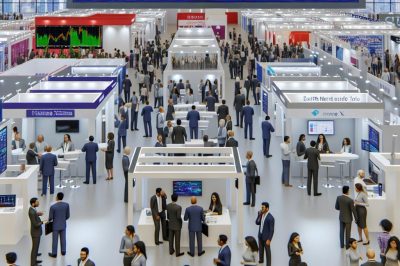Overview of Financial Trade Shows
Financial trade shows play a critical role in the financial sector by creating a space where industry professionals, companies, investors, and service providers come together. These events are designed not only to discuss the latest trends and technologies but also to demonstrate innovations within the financial industry. They serve as a vital platform for networking, exchanging knowledge, and fostering business development. To explore more about various trade shows, one can refer to resources such as the Internet Trade Show List.
Purpose and Benefits
The primary motives behind organizing financial trade shows revolve around showcasing advancements in financial services and promoting business connections. These events also play a crucial role in educating attendees about new financial products and regulatory changes, which can significantly impact business operations. The platforms provided at these shows allow participants to meet with prominent figures and organizations within the industry.
Networking Opportunities
One of the most crucial aspects of financial trade shows is the networking opportunities they provide. A diverse assembly of participants including peers, potential clients, and industry leaders converge, facilitating interactions that often lead to partnerships, collaborations, and significant business deals. The trade show environment is an excellent way for individuals and companies to streamline the process of connecting with key players in the industry, making it easier to form valuable connections.
Learning and Development
Financial trade shows commonly offer a wide range of seminars, workshops, and panel discussions. These sessions are designed to provide updates on recent market trends and to deliver educational content on various financial topics. Presentations led by industry experts offer insights which are invaluable for staying informed and competitive in a rapidly evolving market. These settings often encourage discussions and Q&A sessions, giving attendees the opportunity to deepen their understanding and share ideas with fellow professionals.
Major Financial Trade Shows
In the realm of financial trade shows, several events stand out due to their size and significant impact on the industry.
Money20/20
Money20/20 is one of the foremost global events focused on the payments and financial services ecosystem. It is a gathering of industry leaders who come together to explore the future of money. The event is designed to foster innovative thinking, making it a hotbed for new ideas and discussions about the financial world. Many businesses plan their product launches or key announcements to coincide with this event to leverage the large audience and media coverage.
Sibos
Organized by SWIFT, Sibos is a premier annual banking and financial conference that attracts thousands of delegates. These include representatives from financial institutions, market infrastructures, multinational corporations, and technology partners. The event serves as a melting pot for fostering collaboration and identifying emerging trends in the financial sector. It is renowned for its comprehensive agenda combining networking, informative sessions, and collaborative opportunities that highlight the ever-evolving landscape of banking and finance.
Finovate
Finovate focuses on showcasing the latest innovations in financial and banking technology. Its unique format is centered around rapid-fire product demos, which provide both startups and established companies with a platform to present new technologies and advancements. This concept offers attendees an immersive view of cutting-edge solutions that could shape the future of finance, making it particularly appealing to investors and companies looking for the next big thing in financial tech.
Considerations for Attending
To extract maximum value from attending a financial trade show, there are various considerations that prospective attendees should take into account.
Preparation
Prior to attending, it’s essential to thoroughly research the show’s specific focus and align it with personal or organizational goals. Preparing a detailed schedule can help to manage time effectively during the event and ensure that key sessions and opportunities for interaction are not missed. An informed and planned approach can significantly enrich the overall experience and lead to more tangible outcomes post-event.
Engagement
Active participation both in planned sessions and spontaneous networking opportunities is crucial for making the most out of a trade show. By engaging with presentations and discussions, attendees can gain valuable insights and potentially foster meaningful connections. Asking questions and participating in discussions are ways to actively engage and deepen understanding. This engagement not only enhances personal knowledge but also helps in building a network of contacts that may be valuable in future endeavors.
Future Trends in Financial Trade Shows
With the rapid evolution of technology, the nature of financial trade shows is also changing. Virtual and hybrid trade shows have become more common, allowing broader participation and increased accessibility for those unable to travel to physical locations. These formats not only widen the geographic diversity of attendees and presenters but also offer new ways to deliver content and engage participants.
As the financial industry continues to globalize, trade shows will serve as pivotal arenas for shaping the future of finance. They provide a collaborative space where stakeholders can discuss global financial issues and work towards innovative solutions. Utilizing platforms such as Money20/20 and Sibos, individuals and organizations alike can remain informed about the scheduling and themes of upcoming events. These gatherings are likely to continue influencing the industry’s trajectory by facilitating dialogue and fostering collaboration on a global scale.





